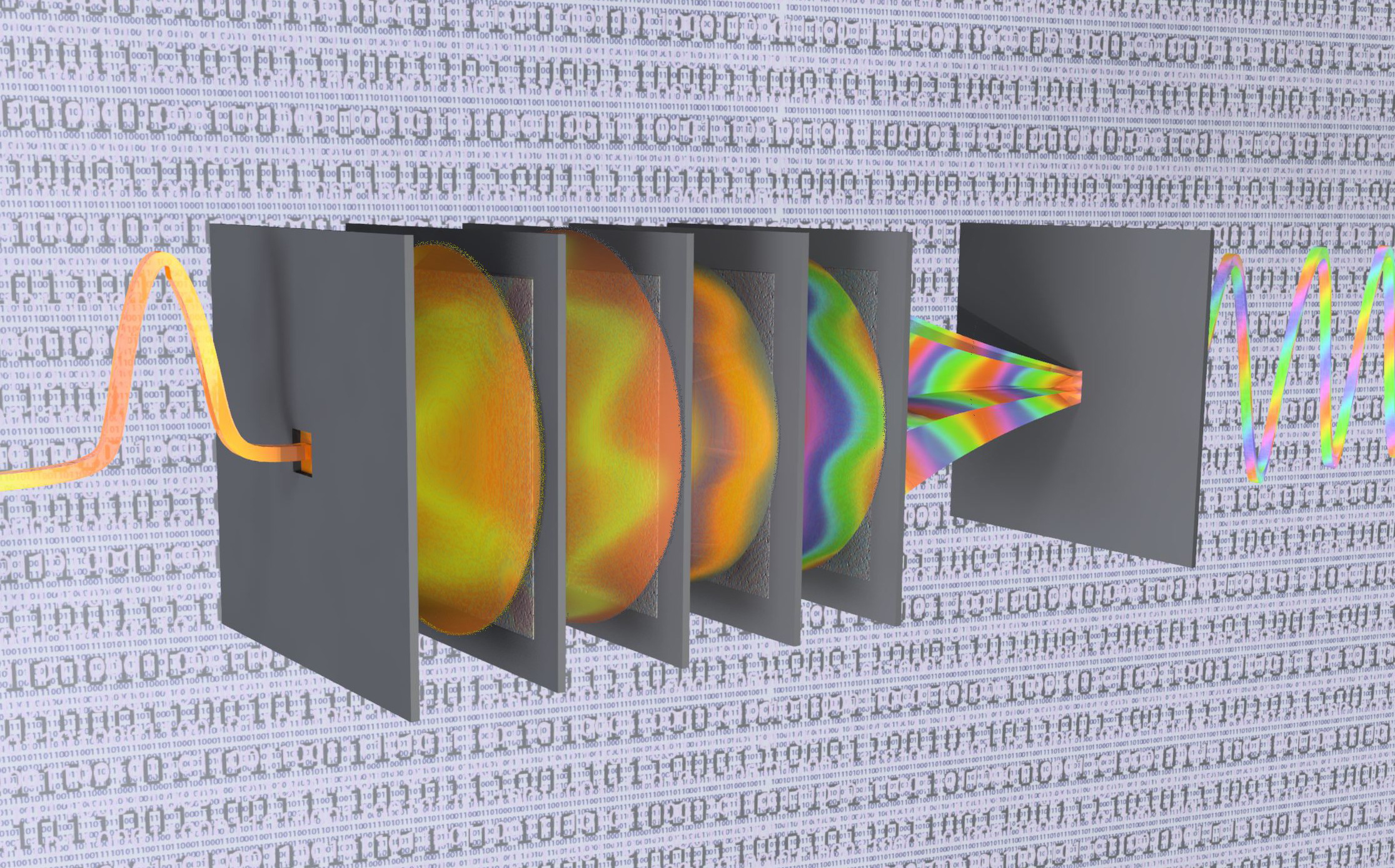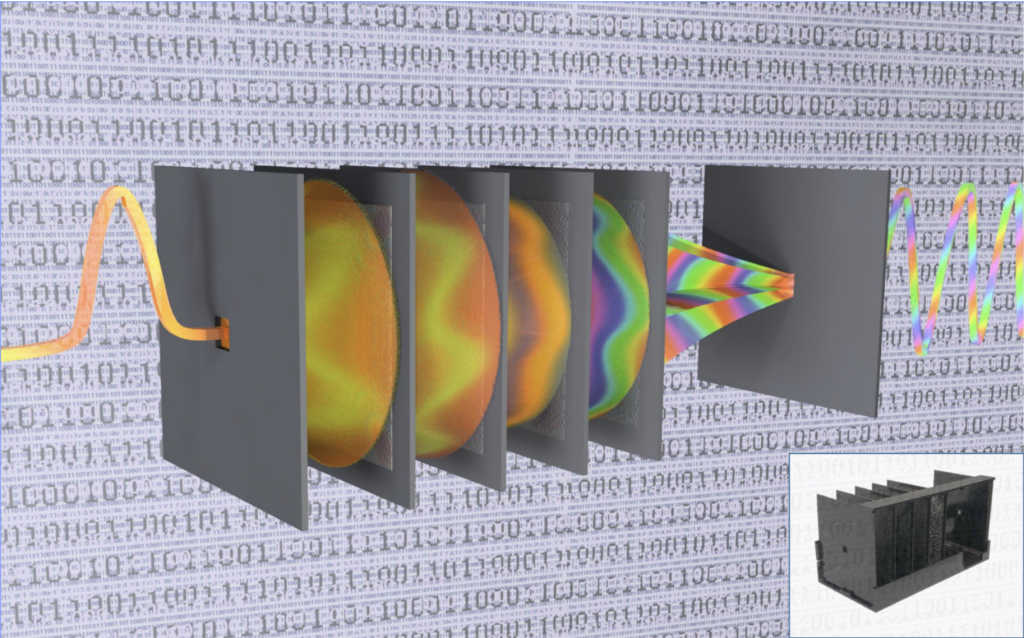UCLA Engineers Shape Terahertz Pulses Using Diffractive Layers Designed by AI

Electrical and computer engineering professors Aydogan Ozcan and Mona Jarrahi have led the first demonstration of direct terahertz pulse shaping through modular diffractive layers designed by artificial intelligence.
The deep learning-based approach can shape any input terahertz pulse through diffraction of light and is fundamentally different from previous approaches that indirectly synthesize a desired terahertz pulse.
The results, published in Nature Communications, mark a major milestone in terahertz science, showcasing a powerful and novel approach for manipulating the spectral and spatial properties of terahertz waves. This modular diffractive pulse engineering framework will find broad applications in different parts of the electromagnetic spectrum, including telecommunications, ultrafast imaging, spectroscopy and other areas.
When merged with appropriate fabrication methods and materials, the presented pulse shaping approach can be used to directly engineer terahertz pulses generated through a variety of sources, such as quantum cascade lasers, solid-state circuits and particle accelerators, which cannot be achieved with the currently existing pulse engineering approaches. Another major advantage of this learning-based approach is that it is versatile and can be easily adapted to engineer terahertz pulses irrespective of their polarization state, beam quality as well as aberrations.
The researchers demonstrated the use of diffractive networks designed by deep learning to shape pulses into desired temporal waveforms by simultaneously controlling the relative phase and amplitude of each spectral component across a continuous and wide range of frequencies using only trainable diffractive layers, forming a small footprint, compact and passive pulse engineering system. This framework uses a deep learning-based physical design strategy to devise task-specific diffractive systems that can shape various temporal waveforms of interest.
Following the digital training stage in a computer, the researchers fabricated the diffractive layers and experimentally demonstrated the success of the resulting pulse shaping diffractive networks by generating pulses with various temporal widths using a broadband terahertz pulse as input.

